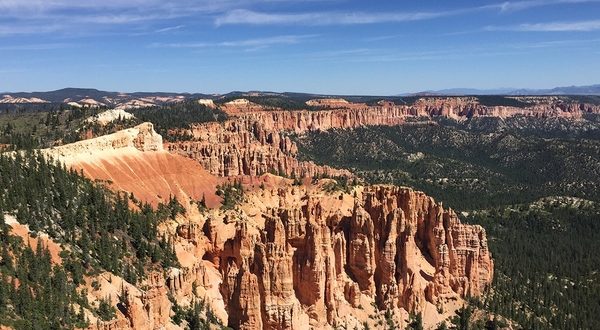[ad_1]
Utah’s travel slogan is “Life Elevated,” and that certainly seems apropos when venturing to the state’s famous Bryce Canyon. My partner and I, along with our kids, visited the park and luckily brought our hiking shoes and lots of water.
Bryce is one of Utah’s so-called Mighty Five national parks, along with Arches, Canyonlands, Capitol Reef and nearby Zion. All are unique in their own way, but I think it’s fair to say that Bryce Canyon is the most unique … could that be a thing?
Hiking the trails around Bryce is a little like wandering through different epochs in time, not unlike the Grand Canyon, with its striated rock formations. But the rock shapes here are, to quote my 11-year-old, “just bizarre.” Their more technical name is “hoodoo.”
Hoodoos are formed by the erosion of thin cliff walls. The limestone that makes up these cliffs is affected by freeze/thaw cycles and gradually becomes pockmarked by holes that are referred to as windows. When the tops of windows erode away, the strange chunky spires that are left behind are the hoodoos.
Because of the great temperature swings found in this plateau, the freeze-thaw cycle happens here an average of 180 days per year! Thus, hiking around the park allows you to see all these various life stages—the thin canyon walls, the windows, and of course the hoodoos—because they’re all being actively created.
The park’s excellent Visitor Center is located just about a mile inside the entrance. Stop here to learn more about the history and geology of the area and fill up your water bottles. The park’s road is essentially an 18-mile cul-de-sac that follows the edge of the plateau. Hiking routes branch off from parking areas along the route, about 65 miles worth in all. Many of them are located near the first three miles of the park road.
We did several hikes here, but our favorite was the Queen’s Garden Trail, a moderately long route that is located near mile marker 2. This trail intersects with several others and is often combined with the Navajo Loop Trail. The views and scenery change dramatically as you descend into the canyon, and the different perspectives give you a much greater appreciation of the geology and the hoodoos.
The kids enjoyed finding the different shapes that people have said particular hoodoos look like, as well as areas where the trail passes through tight formations and even holes in the rock.
Just remember that on most all of the hikes, this one included, that you start off descending, which means you will have to climb back up at the end. Be aware of your energy levels and make sure to bring enough water for everyone. Sunscreen is a smart idea here, as there isn’t much shade to be had and the midday Utah sun can be brutal, particularly in the Summer.
There’s a great deal of wildlife in and around Bryce Canyon, including mountain lions, Great Basin rattlesnakes, prairie dogs, chipmunks, ground squirrels, and a variety of interesting birds. Unfortunately, our one day visiting the park only afforded sightings of squirrels and a few distant prairie dogs. But fortunately, we managed to avoid the rattlesnakes, so I’ll call that a net win.
We used the then nearby city of St. George, Utah, as our home base. The park was a bit more than two hours away, allowing a full day of exploring before heading back to our hotel and hitting the pool.
[ad_2]You can read more of the news on source
 Travelsmart
Travelsmart



